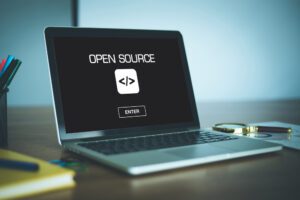
A few weeks ago I wrote a post on the Teldat blog about open source software. I explained how we were seeing the tremendous growth in the use of open source software in recent years. So much so, that the top acquisitions within the technology sector in last year have been for open source software. In that post, I gave an explanation of the advantages and disadvantages to using open source software in comparison to proprietary software or closed source software. However, as I explained then, the trends all indicate that the open source software market is going to increase at a fast rate, hence I have decided to write a new post in order to go one step deeper into this market and explain the important role that licenses play within these types of software and the main differences between them.
Different types of open source licenses
Some would say that the open source concept of software began when computing itself began, as programmers and developers shared freely their software so that they could all learn and help each other in a community type system. That was many years ago and it’s not exactly what is classified as open software today. Primarily, because modern day open source software is based on licenses, which is precisely what I am going to expand upon below.
GNU General Public License
This could be classified as the first type of open source software as we know it today. It reached us in 1985 when Richard Stallman established the Free Software Foundation in October 1985 as a result of the GNU project (1983), and launched the General Public License of open source software. This license has no limits. You can copy it on your own server. You can develop your own software products and services, change code base, etc. and charge a third party for what you develop. The main and very import point, is that your have to release your work under the GNU GPL project, so that your software source code is totally open to everyone who wants to use it. Without going into detail, this is what can be considered as copyleft, which is totally different to copyright. In the case of copyleft licenses such as GPL, it gives anyone who receives the software, the right to reproduce, adapt, or distribute the software.
Berkley Source Distribution Licence
BSD (Berkley Source Distribution License) can also be considered as one of the main open source license type softwares. Although there are various differences between BSD and GPL open source software, the main difference between the two is the copyleft issue. Derivatives of work done on the BSD software may remain closed and the new developments made on BSD can become a paid software. Other issues of the BSD open source software relate to protecting the authors who develop the new software based on BSD.
Other Open Source Licenses
Both GPL and BSD open source software have other types of licenses that vary from the original. For example, GNU Lesser General Public License. This is applied by developers when they want to use GPL with other types of software, so that the code of the other software does not have to be totally open. BSD, has variations such as the New BSD License. In this case if you take another developer’s code and make changes to it, you can’t use the original developer’s name to endorse it.
Apart from GPL and BSD there are many other open source softwares with different types of licenses that have specific license points to be complied with. Examples are: Creative Commons which is very popular for design projects, MIT open source software which is classified as one of the most used open, because its license states, that you are able to deal in the software without practically any restrictions. And there are more; Apache, Mozilla, Eclipse, etc. In all this is a growing market, especially as open source software is widely used in technological growth segments, such as Cloud, IoT, Big Data, Dev Ops, Containers, etc.


























